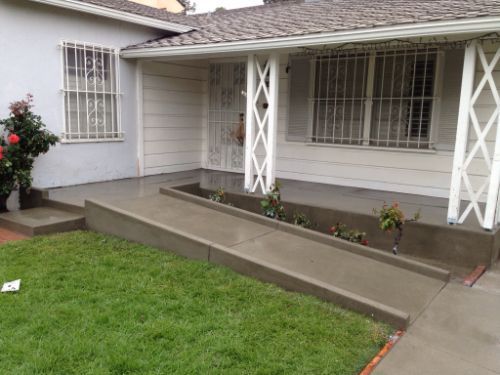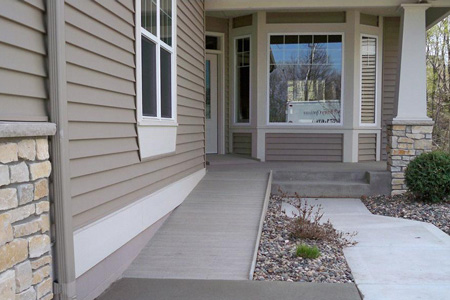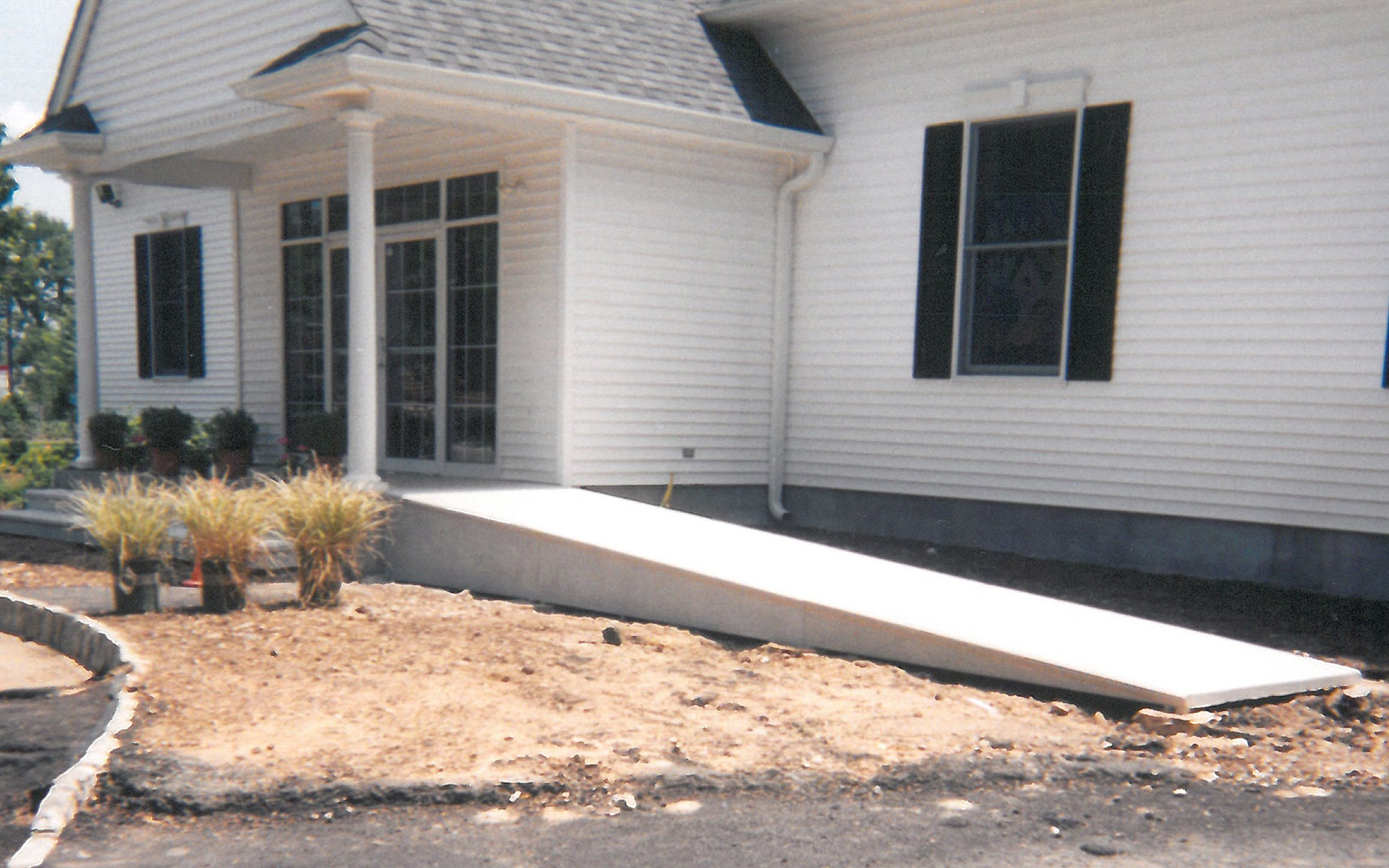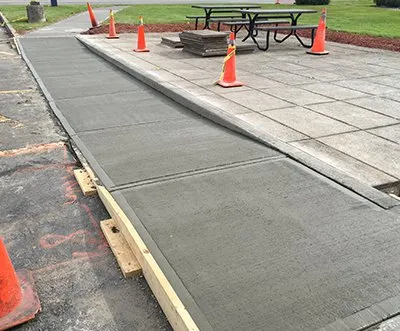ADA Ramp Construction Los Angeles

by Alonso Romero
CA State Lic. Concrete & Masonry C-8
CA State Lic. General Contruction - B
Buckaroo Banzai the Concrete Nerd
Actual person performing the job
Date: 12/22/2023
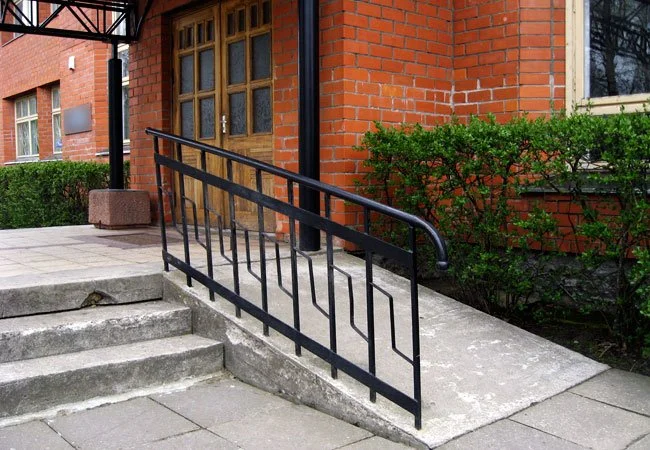
Los Angeles is known for many things – movies, beautiful weather, and terrible sidewalks. Those trip hazard sidewalks are bad enough, but for people with mobility issues, it makes traveling the streets of LA downright treacherous. In fact, the city recently settled a class-action lawsuit to ensure that our sidewalks get fixed.
What about accessing our homes? Thanks to the various housing booms Los Angeles has gone through over the past 100 years, our neighborhoods are a hodge-podge of bungalows, cottages, and ranch-style homes. Those homes, with their cute steps leading up to the entrance can be a nightmare for those with mobility issues.
Businesses need to make sure all their customers and employees can access their buildings, as well. The last thing you want as a business owner is a lawsuit because your sidewalk or ramp are inaccessible to those with mobility issues. In fact, some insurers may not even offer your business coverage unless your sidewalks and ramps are up to ADA standards.
You may have heard about the ADA. The Americans with Disabilities Act, or ADA, is a federal law signed back in 1990 to protect the rights of disabled people. It requires businesses to install ramps according to specific requirements. Private individuals can also install ADA-compliant ramps at their own homes to make accessing their home easier.
Why install an ADA ramp in Los Angeles?
When considering whether to install an ADA ramp at your home (sorry, businesses, this is a must for you), imagine yourself in a wheelchair. How easy would it be to get into your home? If the slope is so steep that someone in a wheelchair would have to power up that ramp, it may not be very accessible. You don’t want to be in a full-on sweat by the time you get to the entrance of your home. That’s not really accessible.
So, when considering ADA compliance, there is a reason why the requirements are the way they are. You want to be able to access your home in as easy a way as possible, no matter your mobility level.
Not only that, but curb edges and other hazards can be dangerous for people using walkers or wheelchairs. You don’t want someone falling out of a wheelchair or a walker because your ramp was too narrow or difficult to navigate.
What are the requirements for an ADA concrete ramp in Los Angeles?
The requirements for an ADA-compliant ramp get pretty technical pretty quick. That is why it is essential that you hire a licensed concrete contractor for the job. They understand the requirements under federal law and know how to correctly install an ADA-compliant ramp on your property.
Here are some basics about ADA ramps:
-
The ADA requires curb ramps along any accessible route in a public area, where the path has a change in height greater than ½ inch.
-
The curb ramp must be 36 inches wide, not including handrails.
-
Handrails are required if the ramp rises more than 6 inches.
-
The length of a ramp isn’t restricted, so long as the ramp doesn’t go over 30 inches in height. However, an excessively long ramp can be difficult for a person in a wheelchair or a walker to navigate.
-
A landing must be installed at the top and bottom or a ramp. It must be 60 inches long and 36 inches wide.
-
Handrail extensions are required at the top and bottom of a run. They must be at least 12 inches long.
-
Your ramp design must also be designed to avoid water from pooling.
In addition, there are also requirements on the slope of the ramp. Slope is how steep the ramp will be. Remember, if it takes all your strength to get up a ramp in a wheelchair, that building is not really all that accessible. Your licensed concrete contractor will know the slope requirements and ensure that your ramp is constructed to these specifications.
While they aren’t required, you may also want to install side flares. They reduce the risk of tripping and can be used by a person in a wheelchair to maneuver if the landing pace is restricted.
As you can see, installing an ADA ramp gets very technical very quickly. There are so many factors and requirements to consider during construction. Consulting with a licensed concrete contractor will allow you peace of mind that your project is being completed up to code for the most ease of use.
ADA Contractor In Los Angeles
Whether you are a commercial business or a private homeowner, you can’t go wrong with a concrete ramp. Concrete is one of the most durable construction materials on the planet. In fact, Ancient Roman concrete has withstood the test of time for over 2,000 years.
When adding a concrete ADA compliant ramp, there are numerous considerations that have to be made to ensure that your business is easily accessible. Chances are your business will have to install some type of curb ramp. That’s the ramp that cuts through curbs or is built up to them. These types of ramps typically allow access from the street or parking lot to a sidewalk or walkway entrance.
According to the 2010 ADA Standards, curb ramps are required at newly constructed or altered streets, highways and street-level pedestrian sidewalks in order to provide an accessible route for pedestrians at intersections. If your business is on the corner of an intersection and you have to replace the sidewalk, it is HIGHLY likely that you will also need to install two curb ramps leading to the street.
With ramps leading to a street, the city is going to require that you add detectable warnings to the curb ramps. This can include using concrete of contrasting color to indicate where the ramp begins to slope. Also, your ramp will need to have installed domes. What are domes? You know those yellow sections of concrete with the raised, round mounds? Those are domes. They indicate where the ramp meets the street and act to slow down a wheelchair, if needed. Under ADA standards, these kinds of detectable warnings are required at transit facilities. However, the city also requires it. .
Adding a concrete ADA compliant ramp just removes barriers to accessing your home or business. Using a licensed concrete contractor takes the guess-work out of constructing a ramp at your home or business. The contractor knows and understands the ADA compliance regulations, so that you can rest assured your ramp will be built correctly.
Give us a call for a quote today. Our concrete contractor has the background to ensure that your ramp is ADA-compliant and meets all the requirements city inspectors are looking for.
